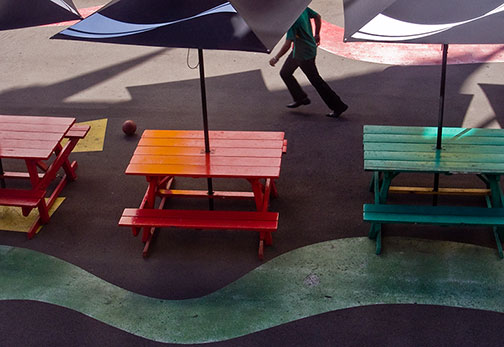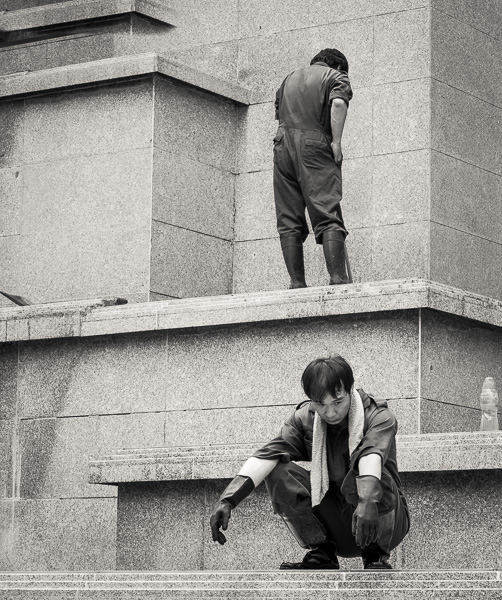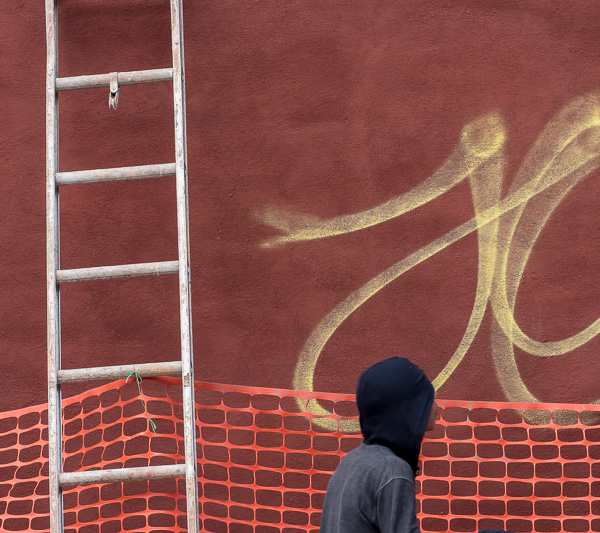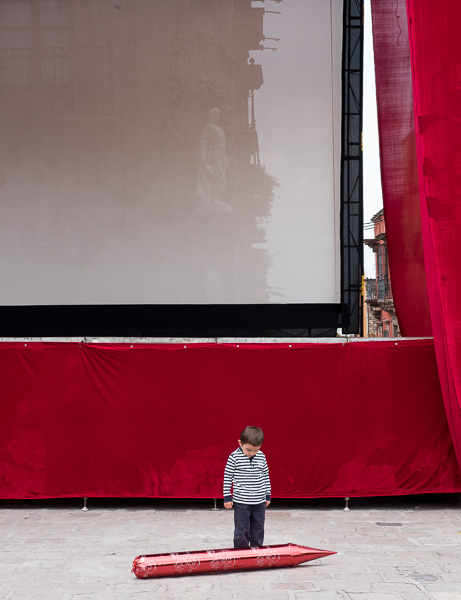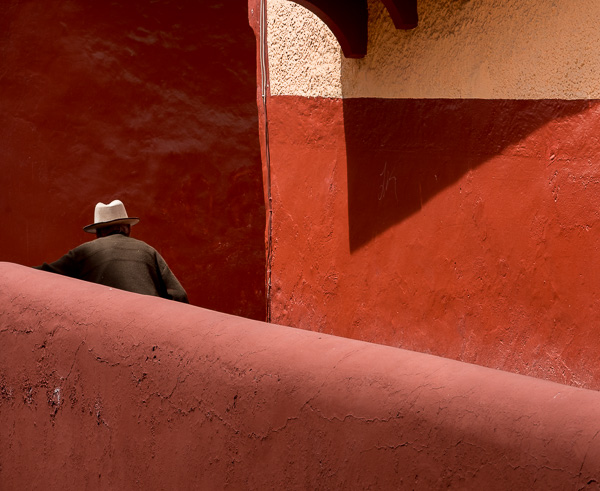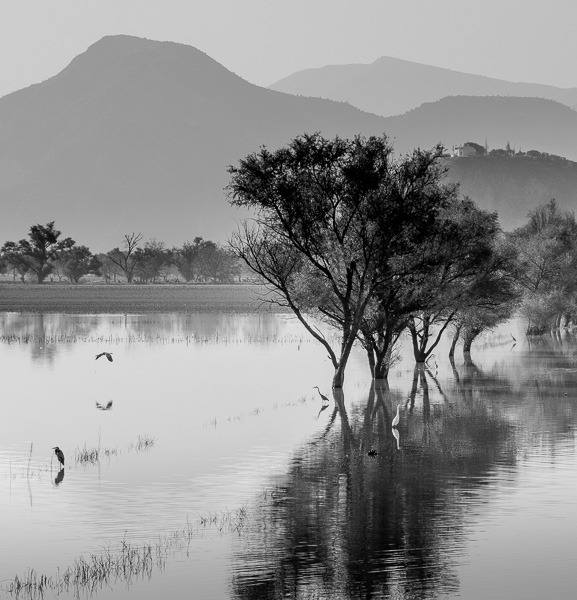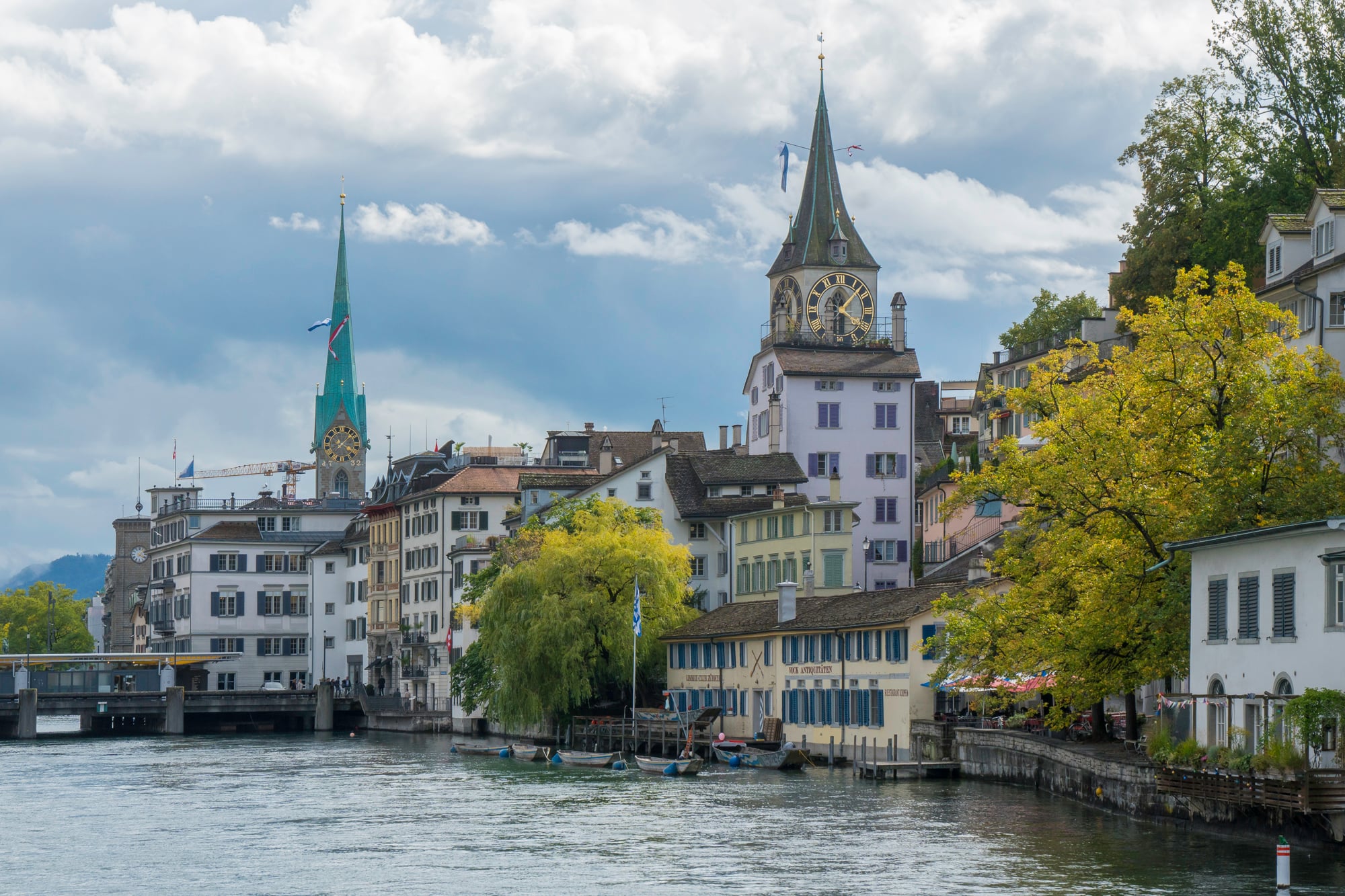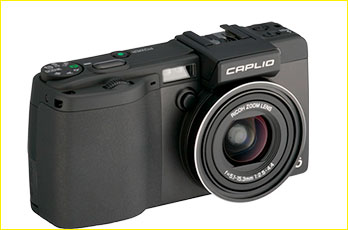
Pocket digital cameras are ubiquitous. You probably already own one – you know, one of those little plastic wonders that fits in a shirt pocket and can detect when someone is smiling or not. (I’m waiting forfrowndetectors to be introduced – just the thing for the photographic curmudgeon.) You also probably have a small camera built into your cell phone, your MP3 player, or your GPS. Let’s face it, little digital cameras areeverywhere!
For all my apparent cynicism, such cameras can be fun to have and use, for family snapshots and those unexpected moments – such as documenting a fender bender. But useful as they are, these cameras don’t often offer the serious photographer the controls, features, and image quality that they need and want.
What are these? My criteria for a usable pocket camera includes…
– small size combined with handholdability
– availability of raw mode
– availability of manual focus
– a high quality lens with reasonably fast aperture and moderate zoom range
– decent wide angle coverage
– availability of fully manual exposure controls
– optical image stabilization
– a decent viewfinder and LCD screen
– solid construction and high quality materials
– use of standard-format memory cards
– > 8+ Megapixels resolution, and decent image quality up to at least ISO 400
– useful battery life
Wavey – Sydney, Australia, March, 2008Ricoh GX100 @ ISO 100
Since no camera can be perfect one always has to make compromises. There are a few features though that I regard asmust haves, and these include raw mode, manual focus, and manual exposure control. Without these the camera is not to my mind a usable tool for serious photography, though it might be just fine as a family snapshot camera.
________________________________________________________________
Ricoh’s Solution
Ricoh marches to the beat of a different drummer. In an industry where it sometimes is hard to tell if a particular silver (or pink, or yellow) digicam is from Olympus, Sony, or Panasonic, Ricoh produces quirky and wonderful little cameras that have won the hearts of many serious photographers.
Announced just a year ago, in March 2007, the GX100 is one of a small number of cameras in the current Ricoh line-up. Unlike the major companies which offer a bewildering array of ever-changing models, Ricoh chooses to have just two or three models at any one time. The GX100 is their current zoom-lens equipped model, while the GRDII fills the fixed-lens niche in the product line.
SIDEBAR
Some might ask why I didn’t turn to the GRD-II or the new Ricoh R8 instead. The answer in the first instance is that I feel limited by a single focal length lens, and in the later case the lack of raw. In both cases not having an optical or electronic viewfinder is too big a limitation for me.
And then there’s the Leica D-LUX 3, another pocket camera which has raw capability. But, no EVF or optical viewfinder. I just don’t care to be limited to holding a camera at arms length for framing and shooting.
Here is a link toRicoh’s GX 100 product page, so I won’t bother reciting the camera’s extensive specs, other than to mention that it has a 10.1MP sensor and 24mm to 72mm equivalent lens of f/2.5 – F/4.4 maximum aperture.
Most notable among these specifications is its wide angle capability, with 24mm equivalent coverage. A weak point in almost all pocket digicams till recently has been their lack of coverage much wider than about 35mm equivalent. This can be very limiting in indoor shooting situations. At 24mm the GX100 addresses this quite nicely.
While only a 3:1, the zoom range is fairly small by some standards, though by offering f/2.5 at the wide end this lens is quite fast by pocket camera standards. As with all camera designs, compromises were necessarily made, but I feel that Ricoh’s choices with regard to lens specifications were very appropriate ones. And, as will be seen, this lens is also an excellent performer.
Following then are my observations on the GX100, based on a week’s use during a trip to Asia and Australia in late February, 2008. I picked up the camera in Tokyo, atYodabashi, a Mecca for photographers, and the world’s largest camera store. (B&H Photo looks like a corner store by comparison with Yodabashi, which occupies an entire department store sized 7 story building in downtown Tokyo.

Direction Sign to Seminar – Luna Park, Sydney, OZ
I had not brought a pocket camera on this trip, thinking that I might pick up something new and interesting while in Tokyo, one of the first stops on my Asia circuit. But as I looked at what was available, the now almost year-old Ricoh GX100 seemed to offer the most appealing combination of form and features for my needs, hence this report. (At the time the uniqueSigma DP1was still a week or two away from availability, though I do plan on testing it when it does become available).
________________________________________________________________
The Curse of the Human Hand
The hand is a wonderful device. It can swing a sledge hammer or thread a needle. But when it comes to cameras there is a certain minimum size below which the miniaturization that current microelectronics allows becomes self defeating. In their desire to make cameras ever smaller and lighter manufacturers are now producing pocket digicams that I find simply too small to hold and handle properly.
Part of the problem is how thin they have become. With LCD screens as their primary framing and viewing mechanism they must be held with outstretched arms when shooting. Shutter releases are typically located on the top-right edge, and when held this way, usually with the thumb and forefinger of both hands, it’s hard to imagine a more unstable platform for photography. No wonder image stabilization has almost become a standard offering on these cameras. It’s a virtual necessity.
The GX100 accomplishes what I’ve seen almost no other camera maker achieve, a thin camera than is easily shirt pocketable, yet which offers a suitable grip for the right hand. This is something that the boxier Canon G9 doesn’t have without an accessory, and which is already a rather thick pocket camera to begin with.
The camera’s overall size feels just about right to me, and after a couple of weeks of shooting, on the road and at home, I can find very little to carp about in this regard. I’ve also been working with the Canon G9 for a while, and as estimable as that camera is (seeNick Devlin’s reporton this site), it simply isn’t a pocket camera (well, maybe an overcoat pocket). That the G9 comes with a neck strap, and the GX100 a wrist strap, tells us how their respective makers think they’ll be carried.
While not as light as some of its silver plastic brethren, at 250 grams, ready to shoot, it has enough mass to feel substantial yet not so much as to feel like it’s going to tear a hole in a shirt or pants pocket.
As the saying goes, the GX100 falls to hand rather nicely – and lightly.
________________________________________________________________
Raw Mode
Unlike 98% of digicams the GX100 provides raw mode. And, to make it all the more sweet, it’s DNG. To my knowledge only Panasonic in its LX series, Canon in the G9, and Sigma in the upcoming DP1 also provide digicam photographers with raw.
Regrettably the GX100 is slow to write raw files, and while at 5 seconds it’s faster than the almost 15 seconds of previous models, it’s still not good enough. Ricoh simply needs to build in a larger raw buffer or faster write engine. There’s no excuse for this, especially at this price point.
By providing DNG though users are free to use the raw processing software of their choice; Adobe’sLightroomandCamera Rawas well as Apple’sApertureincluded. Good for Ricoh.
JPG in several different sizes and compression ratios is also provided, and when shooting raw a JPG is also saved simultaneously, automatically. JPG characteristics may be set to a number of standard modes , but to their credit Ricoh has resisted the temptation to include all those silly fripperies that some other companies can’t resist on the main selection menu, putting them instead into a second tier menu. And thank god, no smile detector.
In JPG mode the camera shoots very quickly, and when set in combination with Snap focus mode (hyperfocal setting) its extreemly quick to shoot and keep shooting.
SIDEBAR
The GX-100 has two MY settings on the top dial. This means that just about every parameter can be set and then memorized to one of these two settings. I have MY1 set to raw mode with full autofocus, for slower and more contemplative shooting, where focus speed and shot-to-shot speed aren’t critical, and MY2 set to JPG and continues shooting mode with Snap (hyperfocal) setting. This means that in this mode I can shoot very quickly – almost as quickly as with an enthusiast DSLR. Either is available instantly with the turn of the top mode dial.
________________________________________________________________
The Lens
Though one of the smallest camera makers (when one thinks of Ricoh, copiers and fax machines come to most people’s minds, not cameras and lenses), over the years Ricoh has consistently garnered favourable comments from photographers about the lenses on its cameras.
The GX100 is no exception. This fast and wide lens has only modest barrel distortion at the wide end, and is bitingly sharp.
Zooming can be set to either continuous or "step" mode, and manual focus as well as a hyperfocal distance setting are available as well.
As already mentioned, providing 24mm equivalent coverage at the wide end is rarely seem in pocket cameras, and this alone (in a zoom as well) is something that many photographer’s have been looking for. Optical image stabilization is provided, and while maybe not as aggressive as that from some makers, does an adequate job.
________________________________________________________________
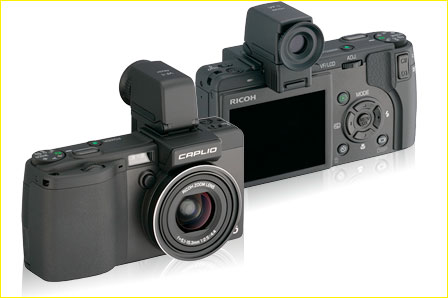
Viewing and Shooting
TheAchilles Heelof all pocket digicams is their poor viewing systems. Very few provide optical viewfinders, and when they do (such as the Canon G9) they range from crappy to useless. Why it’s so hard to create a clear and usable viewfinder remains a mystery, especially on a premium camera where cost shouldn’t be an overriding factor.
For all pocket digicams this therefore means that the rear LCD becomes their default viewfinder. Consequently we are forced to take pictures with them at arms length. Do-able, but not ideal.
Uniquely, Ricoh’s GX100 offers an accessory electronic viewfinder. Normally I’m not a big fan of EVF’s as they simply can’t compete with optical or SLR viewfinders. But, since these are not available in pocket cameras (and as discussed, when they are they’re awful) the clip-on electronic viewfinder that Ricoh provides (either in kit form with the camera or as an accessory) is a very welcome alternative. It is just another example of how Ricoh thinks outside the box (so to speak).
Looking at the photograph above it might be thought that the EVF is somewhat bulky. It isn’t. It’s small enough to fit in a closed fist, and except when putting the camera in a case for transport, can live on the accessory shoe all the time, even on a coat pocket.
One design bonus is that when the camera is set to view though the EVF, and the review button is pressed, the review takes place on the rear LCD without it having to be separately selected. Clearly someone at Ricoh is an actual photographer, something that can’t be said for all camera makers these days.
________________________________________________________________
Focus Modes
In addition to autofocus (slowish, but not as bad as some other digicams which use contrast detection AF), the GX100 also features manual focus. When in this mode there is an optional magnify setting, set with a touch of a button, which makes seeing the point of focus that much easier.
In addition to two AF modes and MF, the camera offers a focus mode calledSnap, which is a hyperfocal distance setting, and anInfinitysetting. Each of these can speed up focusing under different circumstances and go a long way toward making the Ricoh a more useful tool for the more adept photographer.
________________________________________________________________
Flash
When the electronic viewfinder isn’t attached to the hot shoe, the hot shoe is a regular hot shoe, designed to accept generic electronic flash units and other accessories. The GX100 also has a built-in pop-up flash which does all of the latest high-tech things that we expect flash units to do, such as second curtain sync, daylight fill-flash, and red-eye reduction. I found this built-in flash to offer even coverage right out to 24mm, and to balance very well with ambient light conditions.

Alan Hansen– Sydney Harbour, Australia. March, 2008
The above photograph shows the effectiveness of the GX100’s daylight balanced fill flash at full 24mm equivalent coverage. Without it, someone sitting under the boat’s canopy on a sunny day would be either severely underexposed, or the city skyline would be blown out. This shot also shows the benefits of a 24mm equiv focal length. A sailboat’s cockpit is a cramped environment, and a focal length any longer than this would not have allowed as capacious a field of view, not to mention the extreme DOF that its actual focal length of 5.1mm provides.
________________________________________________________________
Build Quality and Controls
The GX100 has a very high quality feel and it is streets ahead of many other digicams, with an aluminum chassis and textured exterior finish. One has the impression that this little Ricoh will still be able to get out and take pictures long after some others will have been sat on, dropped, or otherwise misused to death, as pocket cameras sometimes can be. Build quality is definitely commensurate with price in this instance.
The user interface is in the current vernacular, with both a top front and rear control wheel, providing access to controls in a manner similar to that of DSLRs.
One nice touch is that pushing inwards on the rear wheel calls up a four icon menu, the items of which are user selectable from a Custom Funtion menu. I’ve chosen Exposure Compensation, ISO, File Type, and Focus Mode as my four. As each one is selected a range of additional choices appear on screen, and a push of the rear wheel inwards again sets the choice and makes it all disappear.

The Last Drive-In. Coberg, Ontaro. March, 2008
Ricoh GX100 at 35mm equiv. ISO 100
Beside the rear LCD is the now usual four way controller buttons offering shooting mode, flash, image review and macro mode. There is also a playback button, self timer button, and image display options button. In the center is a Menu button.
The top panel includes a shutter release, mechanical flash release, power on/off button, and a function button which is user programmable. I’ve set mine to AE lock. Finally there is a Mode wheel offering the usual Program, Aperture and Manual exposure modes, as well as a movie mode and two user programmable MY positions.
There’s more, but it’s tedious listing everything, and by now you should have something of a feel for what the camera is like. There isn’t much that Ricoh has left out, and there’s far more than one usually finds in a pocket digicam, including many manual modes and user programmable functions. Yet for all of that, and the camera’s small size, it feels remarkably uncluttered. Simply good ergonomics at work.
And – for those of you who live in winter climes, the GX100 actually handles quite nicely with gloves on, something that can’t be said for many small pocket cameras.
________________________________________________________________
Battery and Cards
Power is provided by a removable Lithium Ion battery which is capable of some 250 or so shots. The recharger is a very small unit that plugs directly into the wall, so there are no cables to lose.
Thoughtfully, Ricoh also allows the GX100 to be powered by 3 standard AAA batteries. While these may only provide a couple of dozen frames it’s reassuring to know that in a pinch power is available almost anywhere, at any time.
The camera takes standard SD memory cards, including fast cards up to 4GB. Sorry Sony and Olympus, I refuse to buy cameras any more that don’t use either CF or SD format cards. Oddball xD and Memory Stick formats are overpriced and not usable in other maker’s cameras when it comes time to try something new, or when traveling with other photographers and wanting to borrow or lend a card or a reader.
________________________________________________________________
Image Quality
So far the GX100 sounds a bit like a dream come true. Well, sorry, but it’s time to wake up. This is after all a digicam, not a DSLR, and therefore one simply can’t apply the same image quality standards to a camera like the GX100 as one would to a larger camera.
That isn’t to say that the images aren’t good. For many purposes they will be more than fine; in fact really quite excellent. I find the camera to be a terrific travel companion, and with its 10MP sensor it is able to make very nice 11X17" prints. Are they a bit noisy? Yes, they can be, especially in the shadows, at ISO 200 and above, depending on the scene and how it was shot. And they get increasingly noisy as the ISO goes up.
But, a bit of judicious noise reduction will handle ISO 400 very nicely. This needn’t be heavy-handed with a dedicated NR program. The basic luminance and color noise reduction sliders in Lightroom or Camera Raw are all that’s needed. (Though I didn’t spend much time looking at in-camera produced JPGs, they do seem to be over noise reduced. Another reason to use raw and be able to make ones own decisions).
Below is a casual photograph of one of Australia’s leading photographers, David Oliver, taken at his Sydney studio / gallery when I visited there in early March, 2008. The image’s specs are – 1/50 sec at f/2.5 and ISO 400. The focal length used was 5.1mm which is equivalent to 24mm.
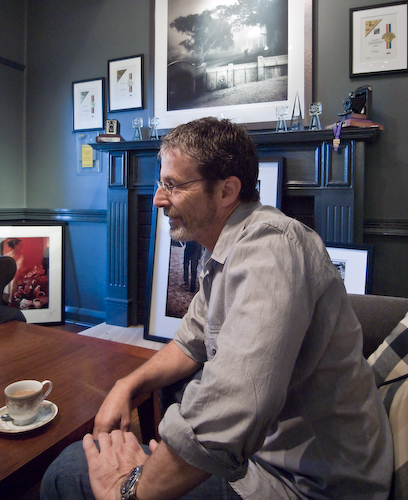
Basic raw processing was done in Lightroom. Below is a 100% crop with the frame on the left showing prior to noise reduction, and the one on the right with moderate noise reduction. Which one to use simply becomes a matter of choosing between detail and noise, and in this instance I preferred to clean up the moderate ISO 400 noise.


Without doing a side-by-side comparison I’d say based on my experience with both, the Canon G9 has an edge when it comes to image noise, certainly at higher ISO’s. But noise isn’t everything that a camera is about. Some people fret over it, but many see it as a distinguishing characteristic and not something to get overly fussed about.
More importantly for me is the quality of the lens, its resolution as well as freedom from various forms of aberration. In this regard the lens on the GX100 is a champ. I have never yet seen equal sharpness and resolution from any pocket camera’s optical system. The camera is also generally free most forms of highlight fringing, all too common with many small photosite digicams.
________________________________________________________________
Macro Mode
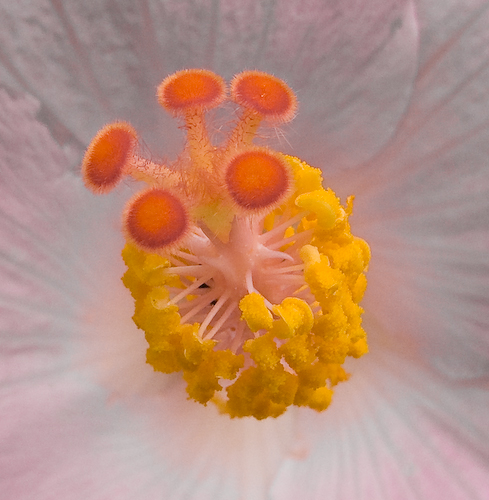
There is a macro mode which allows photographing as close as 1cm from the front lens element – so close that when photographing a flower you need to be careful not to get pollen on the lens. Not my thing in any event, but nice to know that it’s there.
________________________________________________________________
Interval Shooting
The GX100 features a built-in intervalometer, allowing automated exposures at intervals between 5 seconds and 3 hours, settable in 5 second increments. Many camera systems require the purchase of an expensive timer / release, so this is a plus, but I wonder how many people will do this type of shooting with a digicam. Note though that the camera does not have any sort of cable release socket, either mechanical or electronic, so it’s a good thing that this timing capability is built in.
Be aware that there is a tripod socket on the base, but that it is not directly underneath the lens, and therefore those that like to do nodal point stitching will find this not to their liking. Again, not something that fusses me in a pocket digicam which is unlikely to be used on a tripod very often. (Correction – a proprietary USB release is available from Ricoh.)
________________________________________________________________
Price, Availability, and Accessories
Ricoh cameras are available from dealers in most countries, but not everywhere. Curiously, they are not available in Canada at all, and they withdrew from the US market as well a couple of years ago. Fortunately for Americans, and mail order buyers,Adoramapicked up the line and is carrying it in the US, offering a US warranty. The camera is available as astand-alone, or as part of akit. Their prices are comparable toYodobashiin Japan, and provides good value from a reputable dealer.
There are several accessories available beside the electronic viewfinder, which I do find to be a must. These include a lens hood, which also provides mounting facility for the 19mm WA adaptor and filters, a soft case, extra batteries, and an AC adaptor – worth having if you plan on doing time lapse photography, as the camera willnotgo into sleep mode when set for this, and therefore batteries will run down fairly quickly.
________________________________________________________________
The Bottom Line
There’s an awful lot to like in the Ricoh GX100, and little to be concerned about. In fact it has quickly become my favourite all-time pocket camera, and now comes along every day, together with my wallet, iPhone, and keys. Pretty soon I’m going to need a man-purse, me thinks.
If Ricoh could clean up noise a bit more at ISO 80 and 100 without reducing resolving power, and put in a bigger buffer for raw shooting, the camera would get five stars. As It is I’ll give it four out of five – it’s that good. But whatever you do Ricoh, don’t add smile detection.
March, 2008
Read this story and all the best stories on The Luminous Landscape
The author has made this story available to Luminous Landscape members only. Upgrade to get instant access to this story and other benefits available only to members.
Why choose us?
Luminous-Landscape is a membership site. Our website contains over 5300 articles on almost every topic, camera, lens and printer you can imagine. Our membership model is simple, just $2 a month ($24.00 USD a year). This $24 gains you access to a wealth of information including all our past and future video tutorials on such topics as Lightroom, Capture One, Printing, file management and dozens of interviews and travel videos.
- New Articles every few days
- All original content found nowhere else on the web
- No Pop Up Google Sense ads – Our advertisers are photo related
- Download/stream video to any device
- NEW videos monthly
- Top well-known photographer contributors
- Posts from industry leaders
- Speciality Photography Workshops
- Mobile device scalable
- Exclusive video interviews
- Special vendor offers for members
- Hands On Product reviews
- FREE – User Forum. One of the most read user forums on the internet
- Access to our community Buy and Sell pages; for members only.






